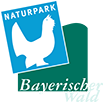Wild majesty
Primeval forest relict in the Arberseewand
The Arberseewand, which rises steeply over 400 metres, is home to one of the last primeval forest relicts in the Bavarian Forest. Since logging proved difficult here due to the area’s inaccessibility, the forests have remained largely untouched.
The rocky sites of the Arberseewand are particularly rich in ice age relicts such as star swertia and mignonette-leaved bittercress. These plants, which are adapted to the cold, grew in the area before post-glacial climate warming and forestation and have retreated to special “retreat sites” such as summit rocks, rock faces, spring meadows, stone runs or bogs.
Native forest
Native forests are characterised by high species diversity, different age stages, lying and standing deadwood, and a structure-rich composition.
- Composed of several tree species – beech, spruce, fir, and sycamore
- Differences in age and height of the trees, some being well over 400 years old, tree heights of 30–46 metres
- Layers – upper and lower tree layer, shrub layer, herb and moss layer
- Many habitats – old-growth and deadwood-rich, shady and sunny, damp and dry areas
Tinder fungus – Here, fruiting bodies of deadwood-colonising fungi can often be seen on dying trees. The most common examples of these tree fungi are the red-banded polypore and the tinder fungus, which is also known as “Hodernsau” in the Bavarian Forest. The name “Hodern” (Bavarian term
for cleaning rags) refers to this water-absorbing fungus from which hats, caps and shoulder bags were made in the past.
Deadwood, yet full of life!
The rock face rises steeply here. Too steep for us humans, but ideal terrain for preserving a primeval forest-like area with mighty, old trees and plenty of deadwood. Take a closer look at the deadwood lying around here. What grows and crawls around here? How damp are the different mosses?
